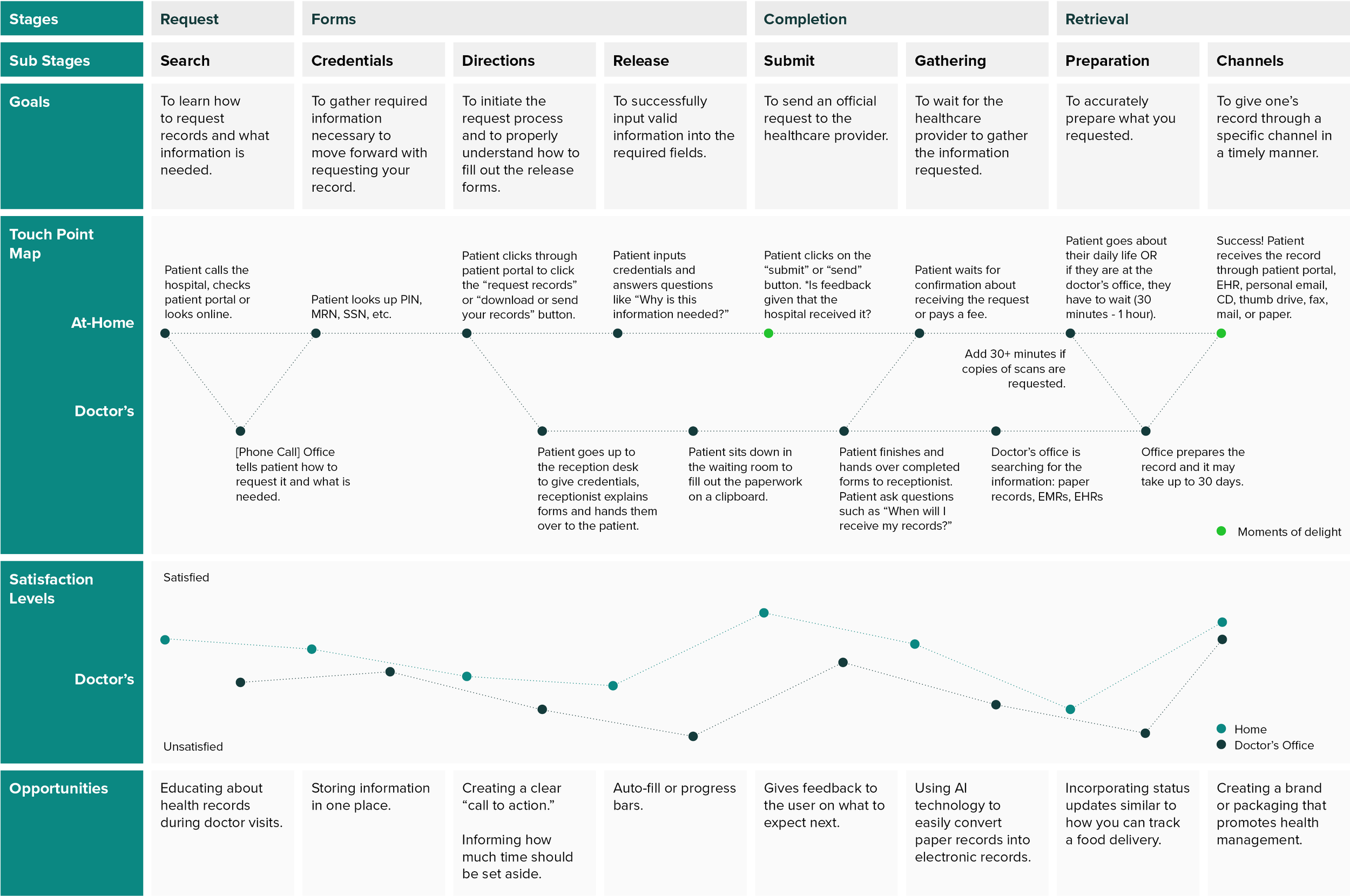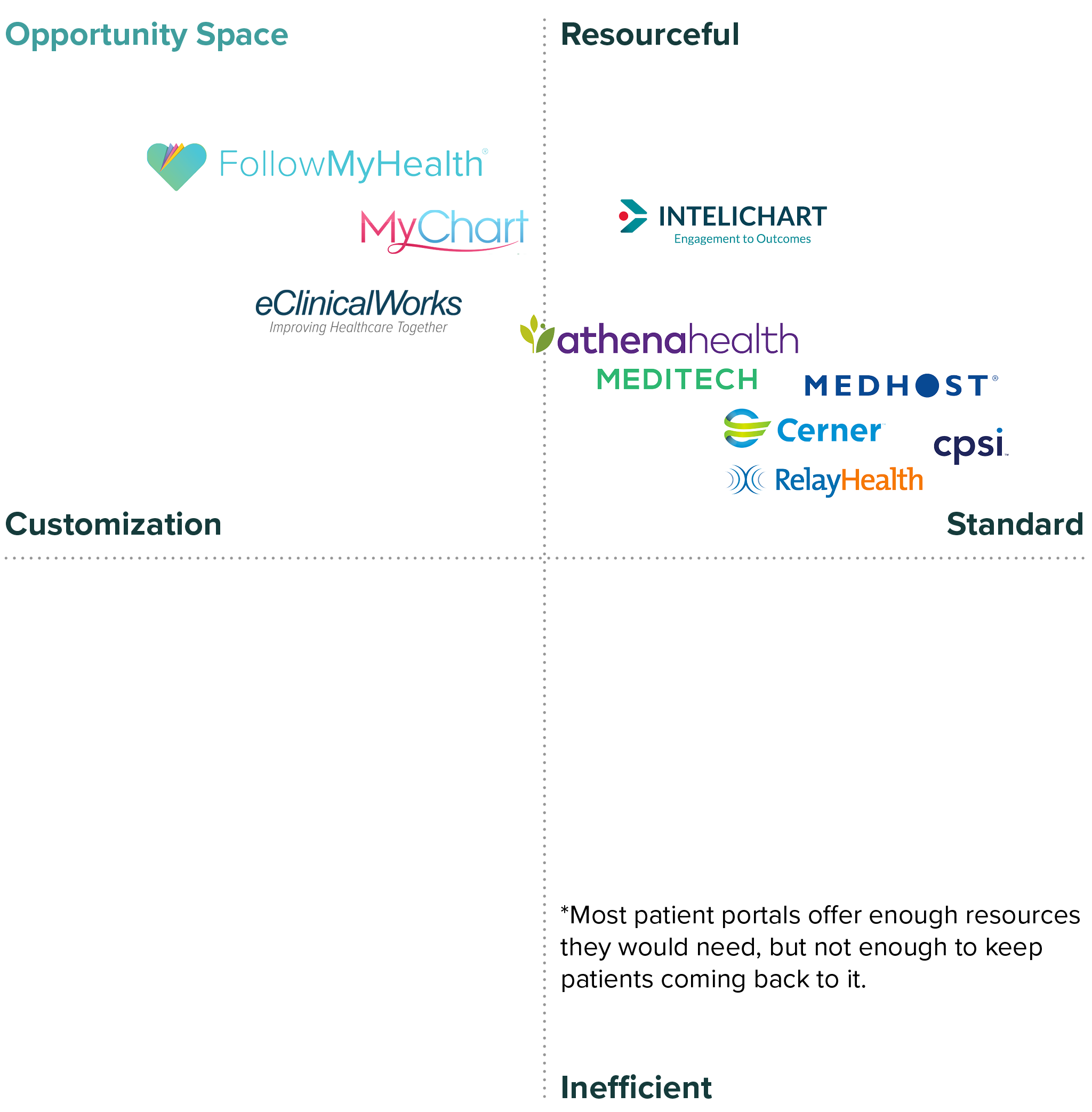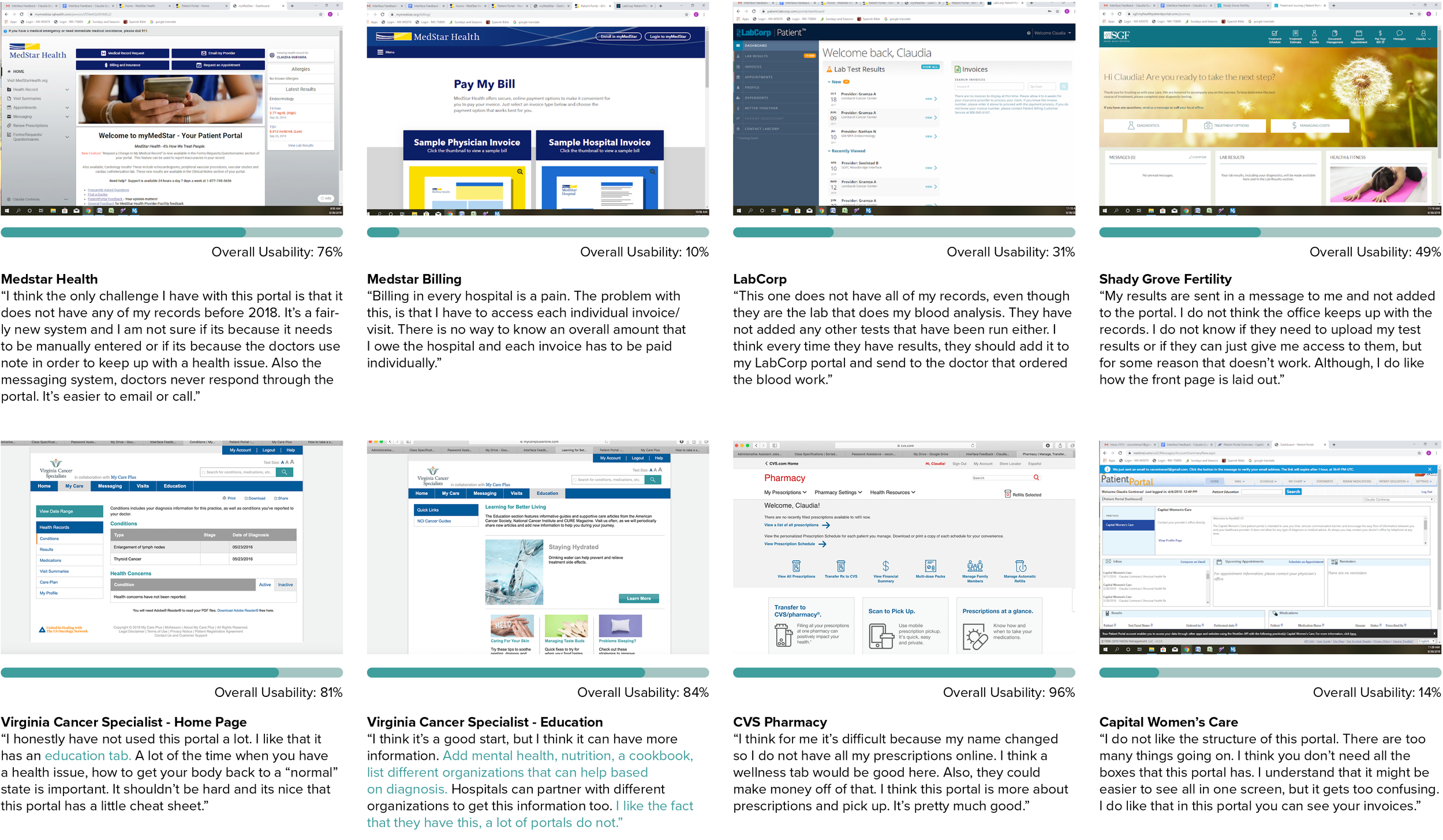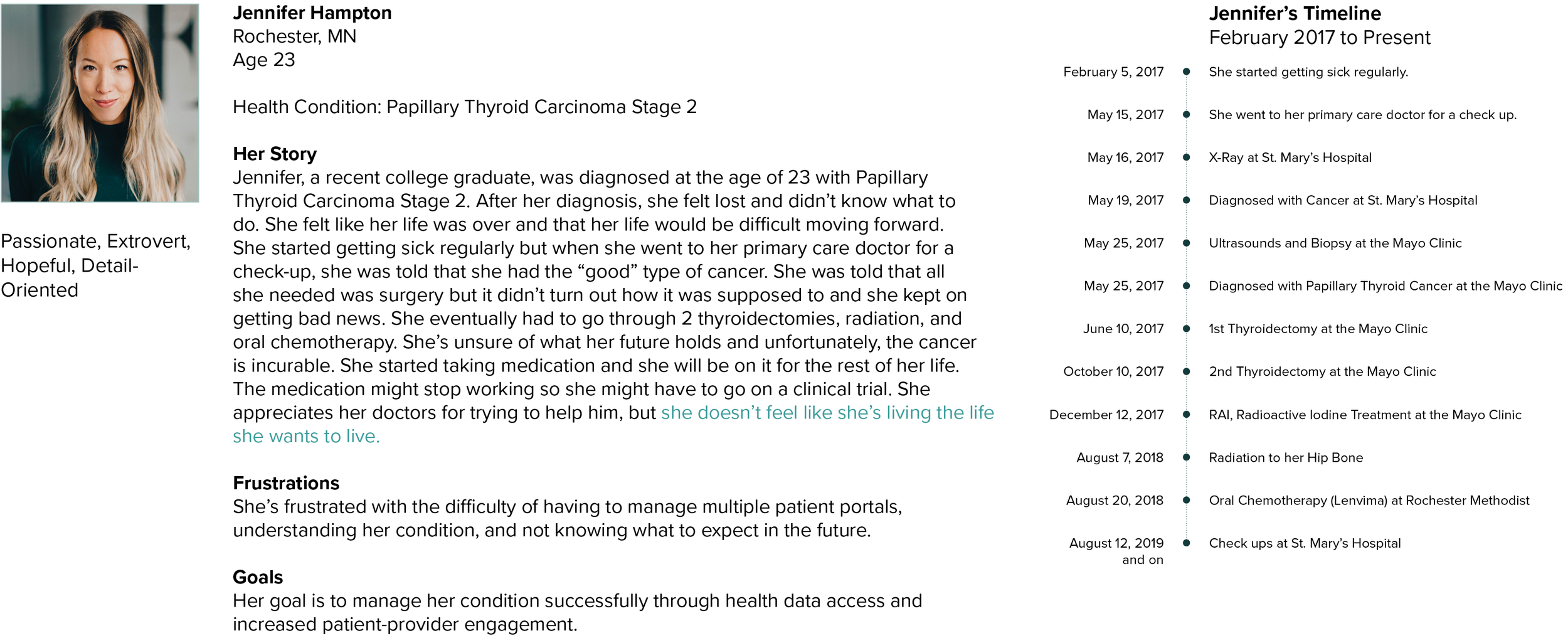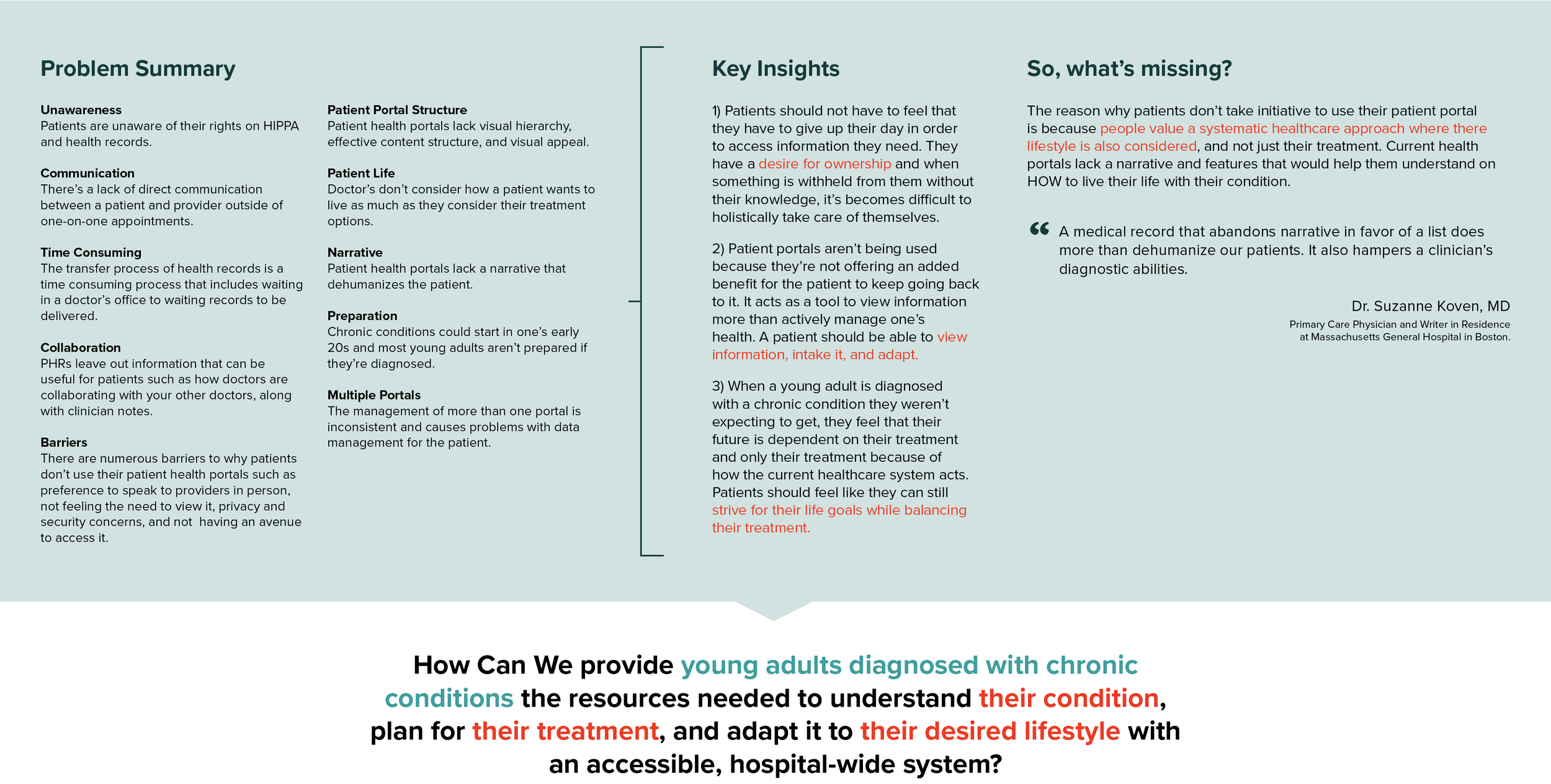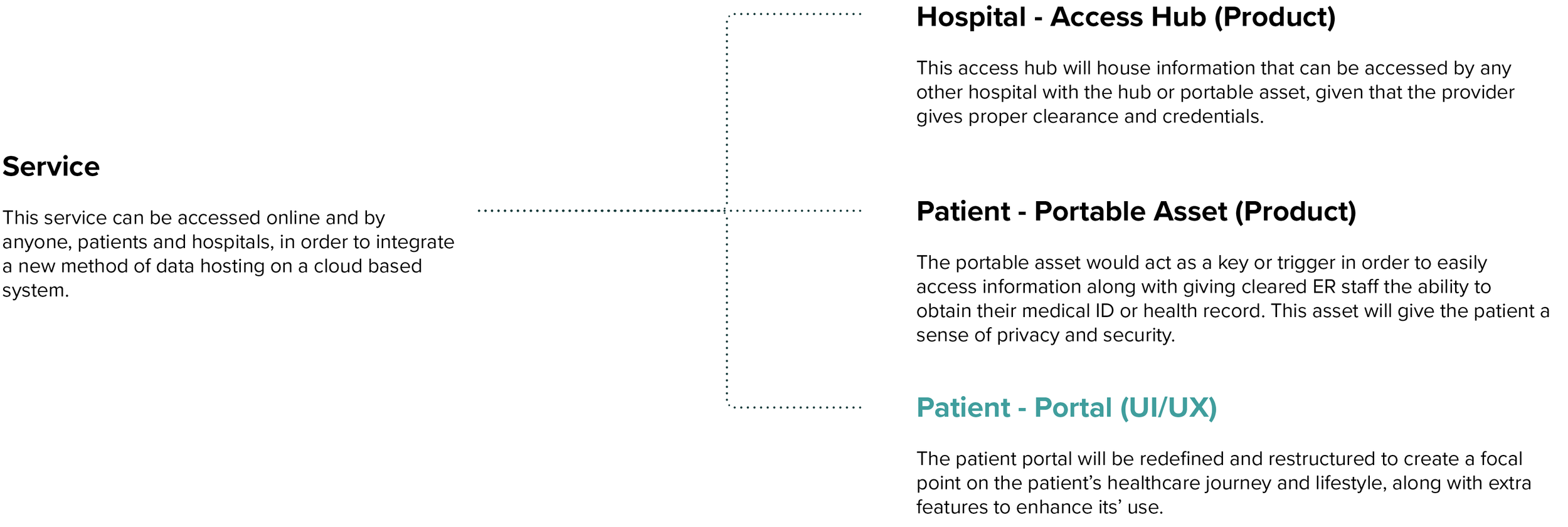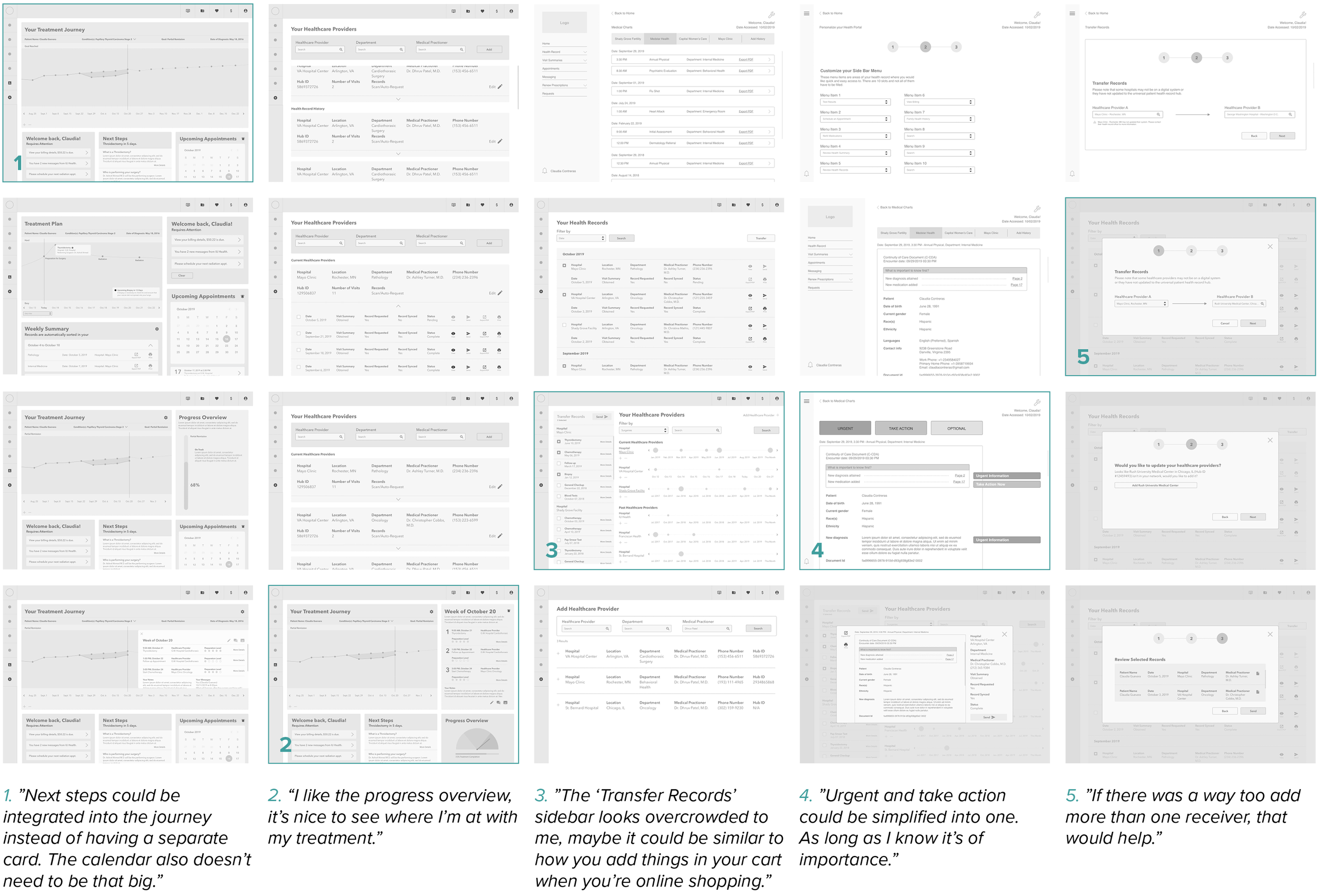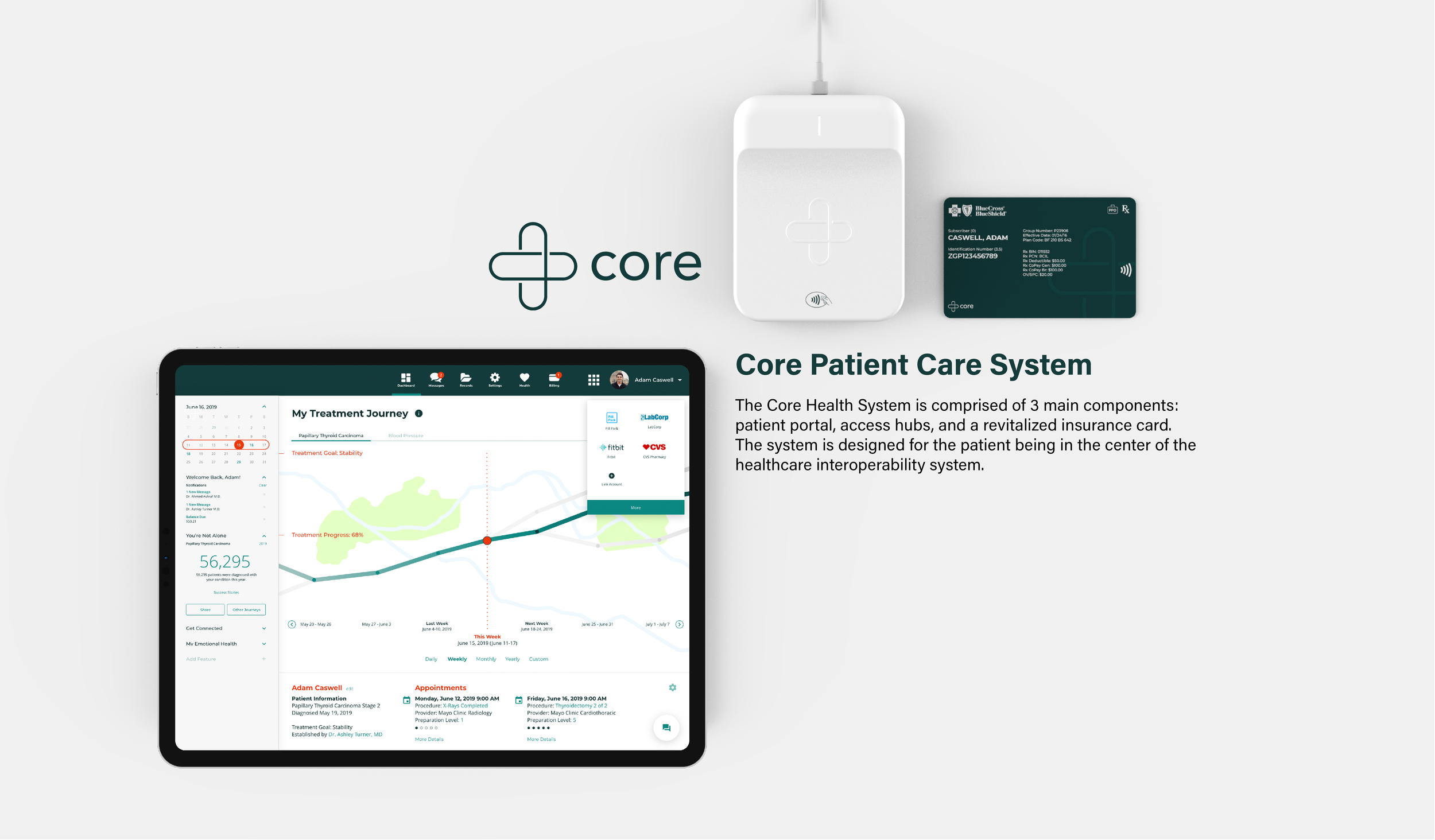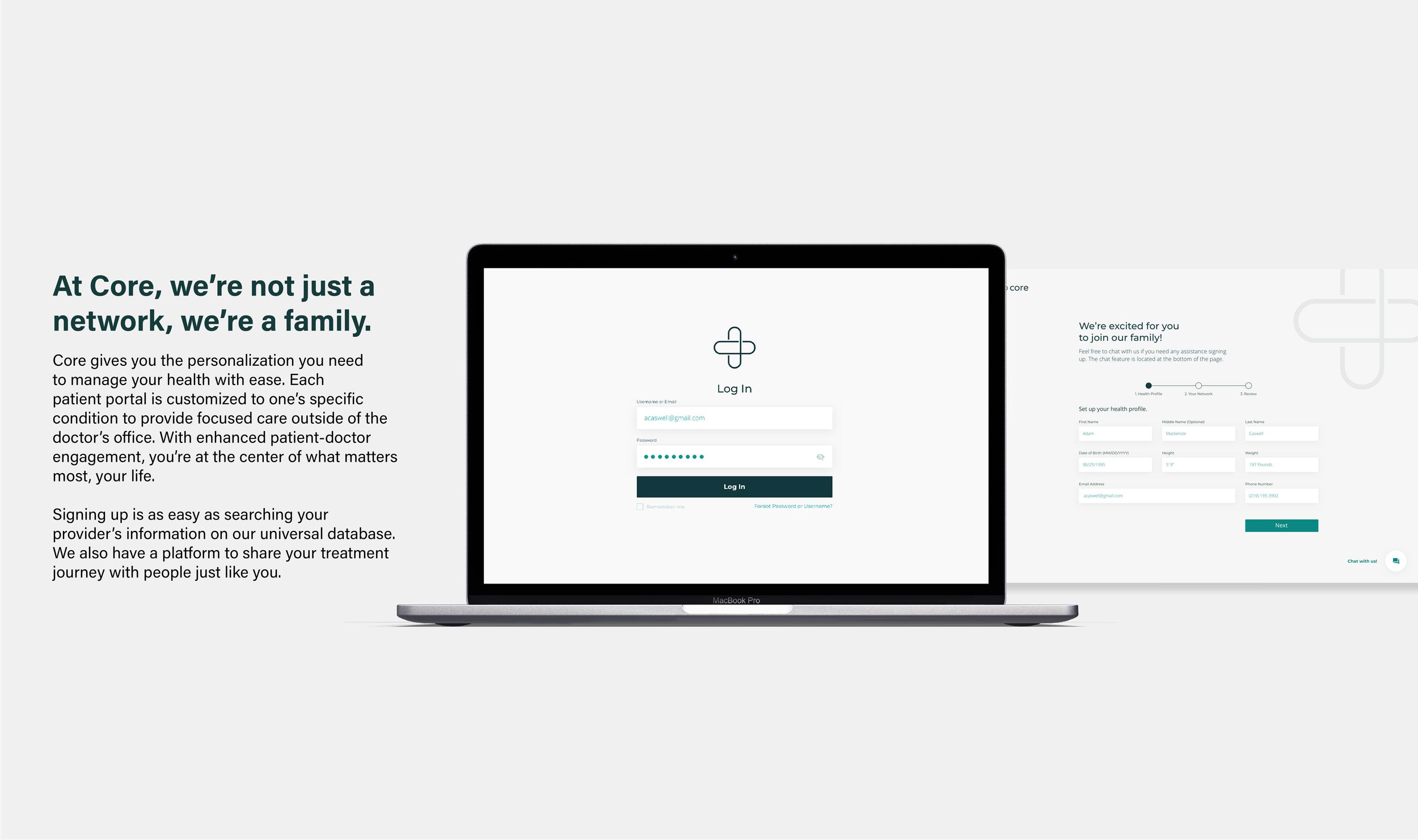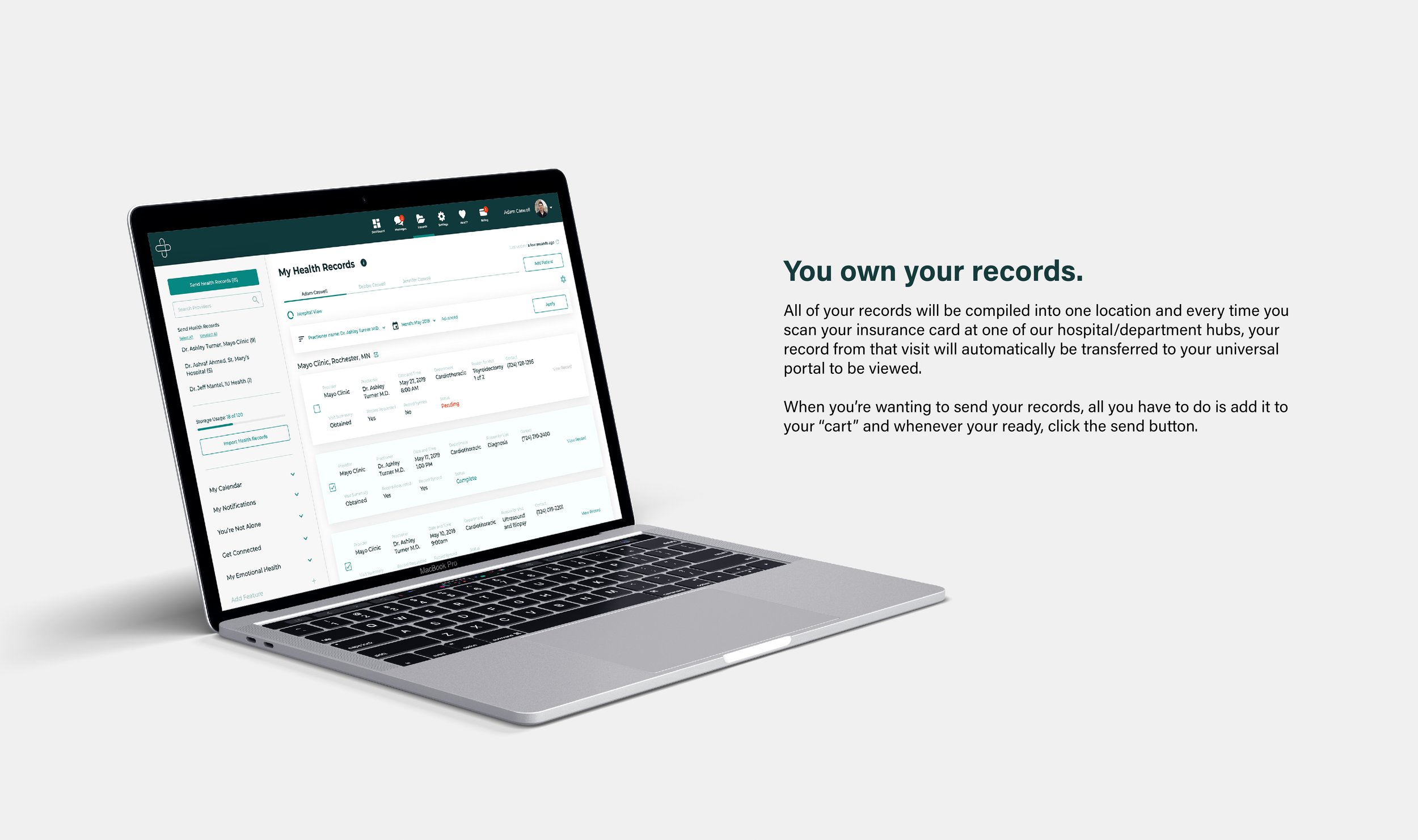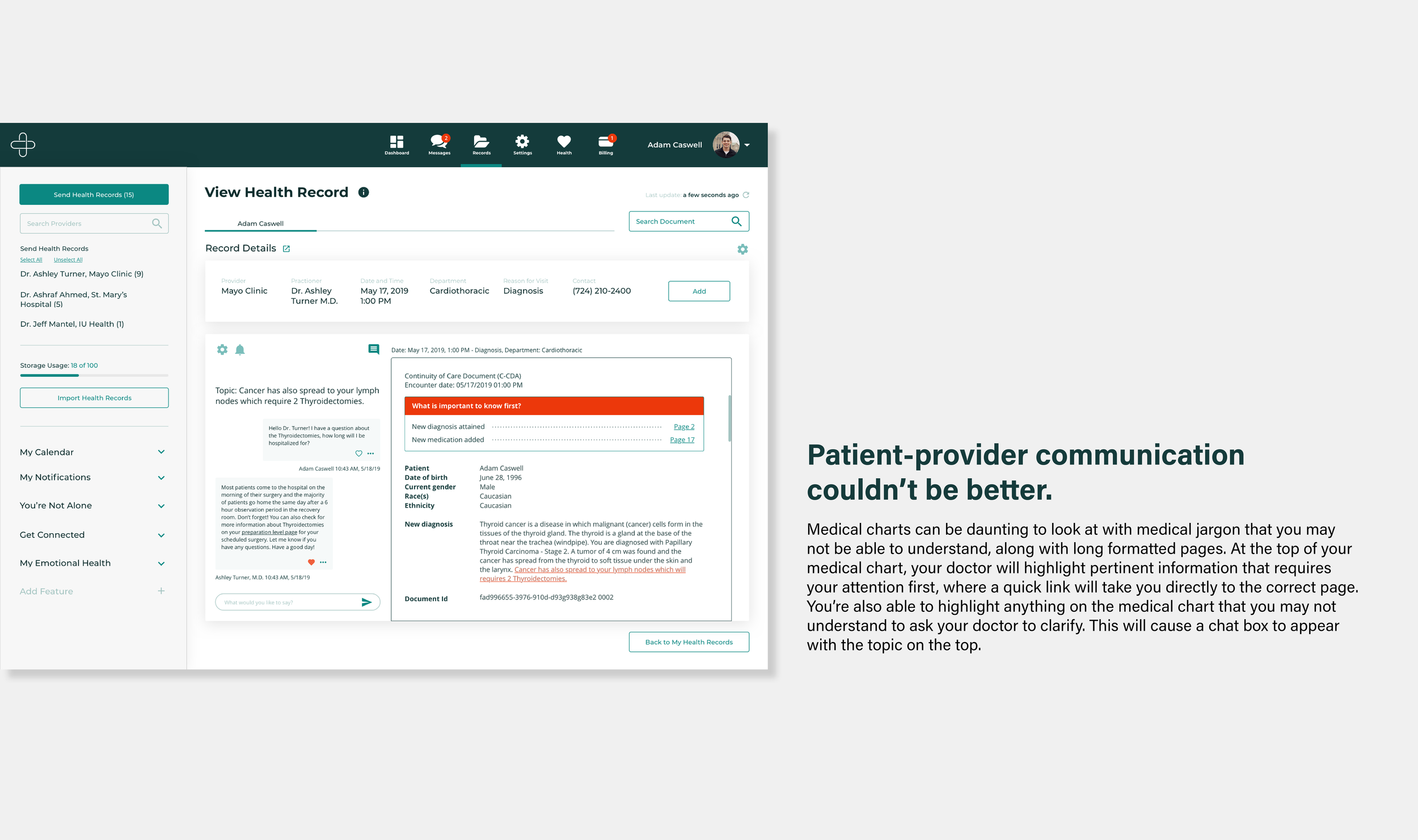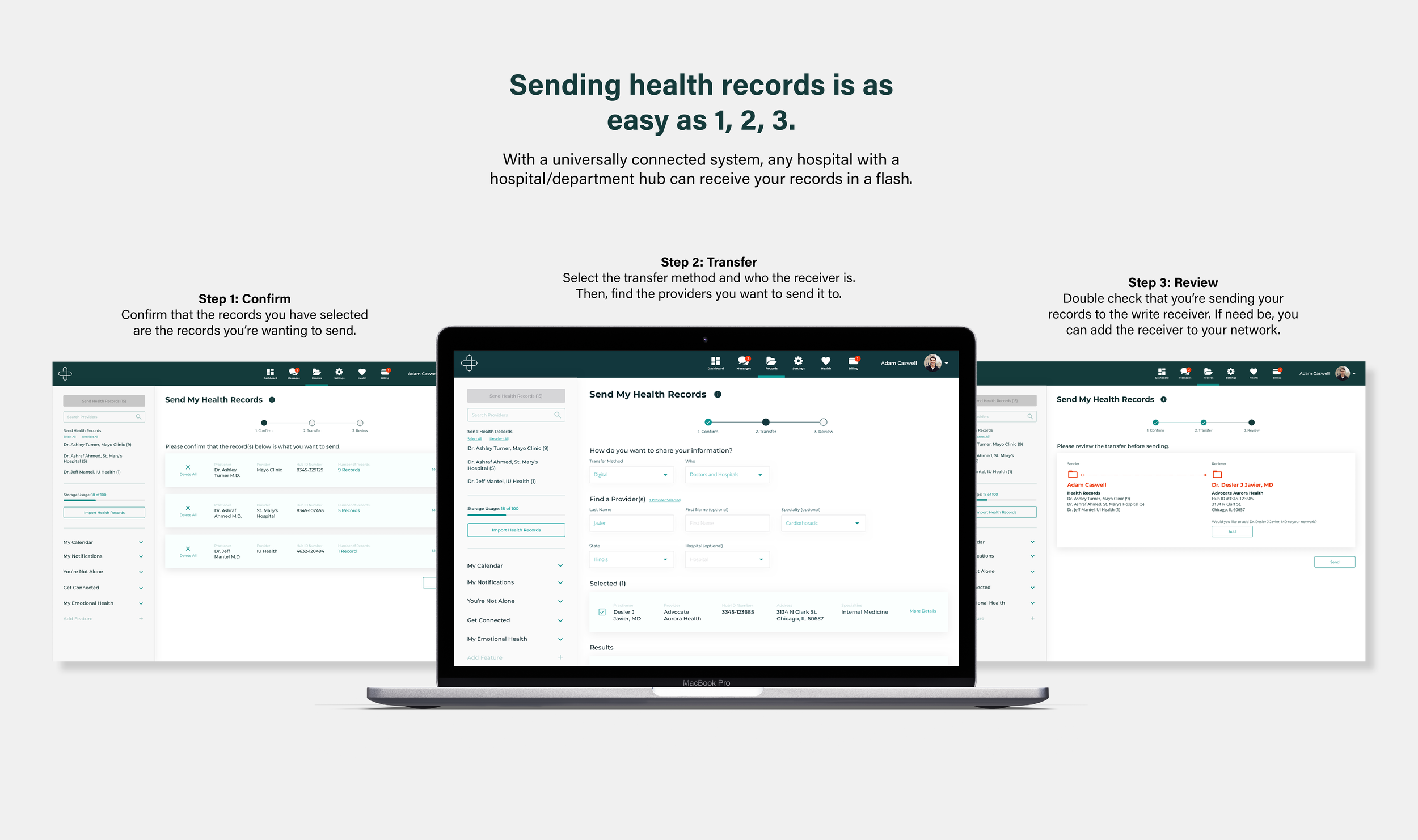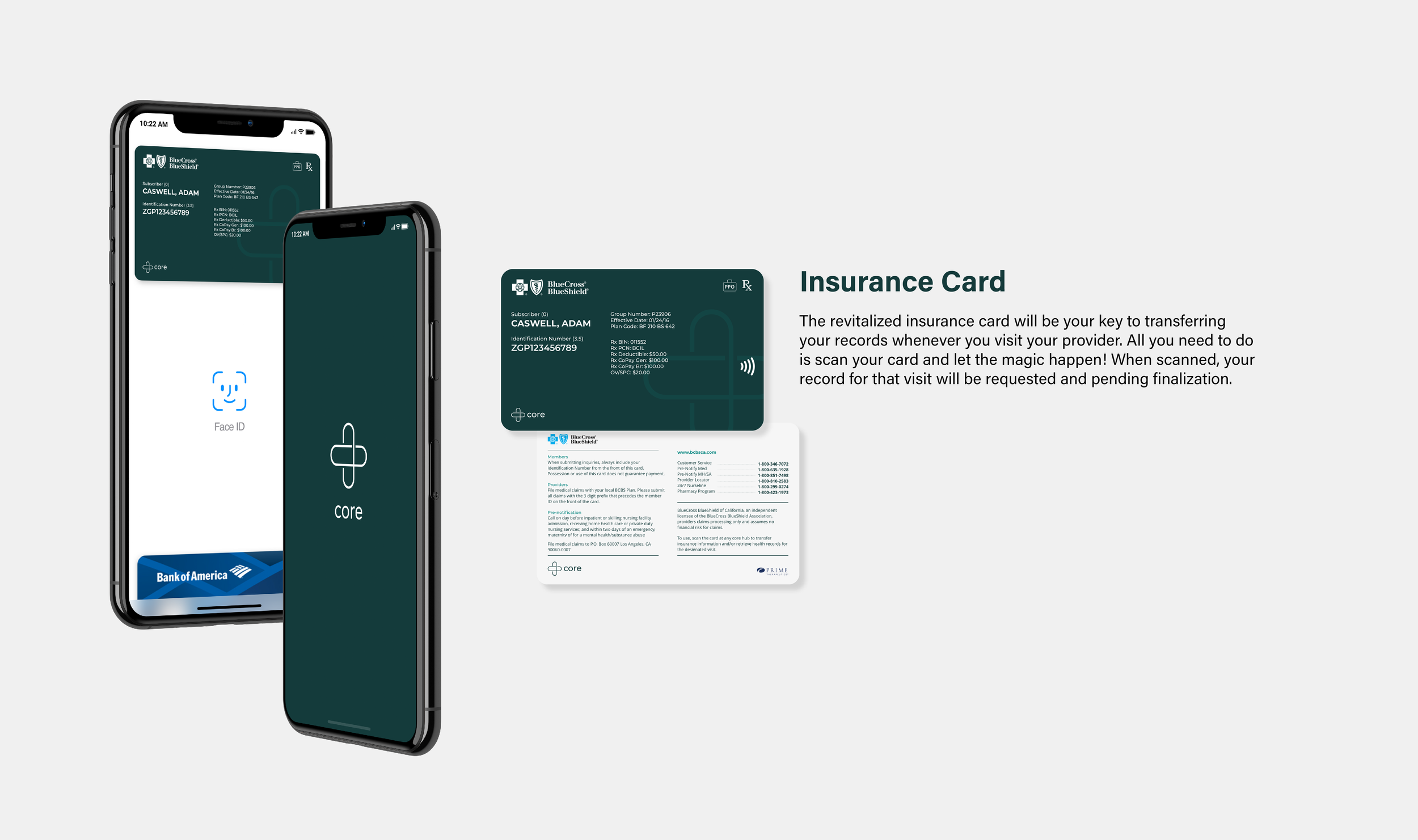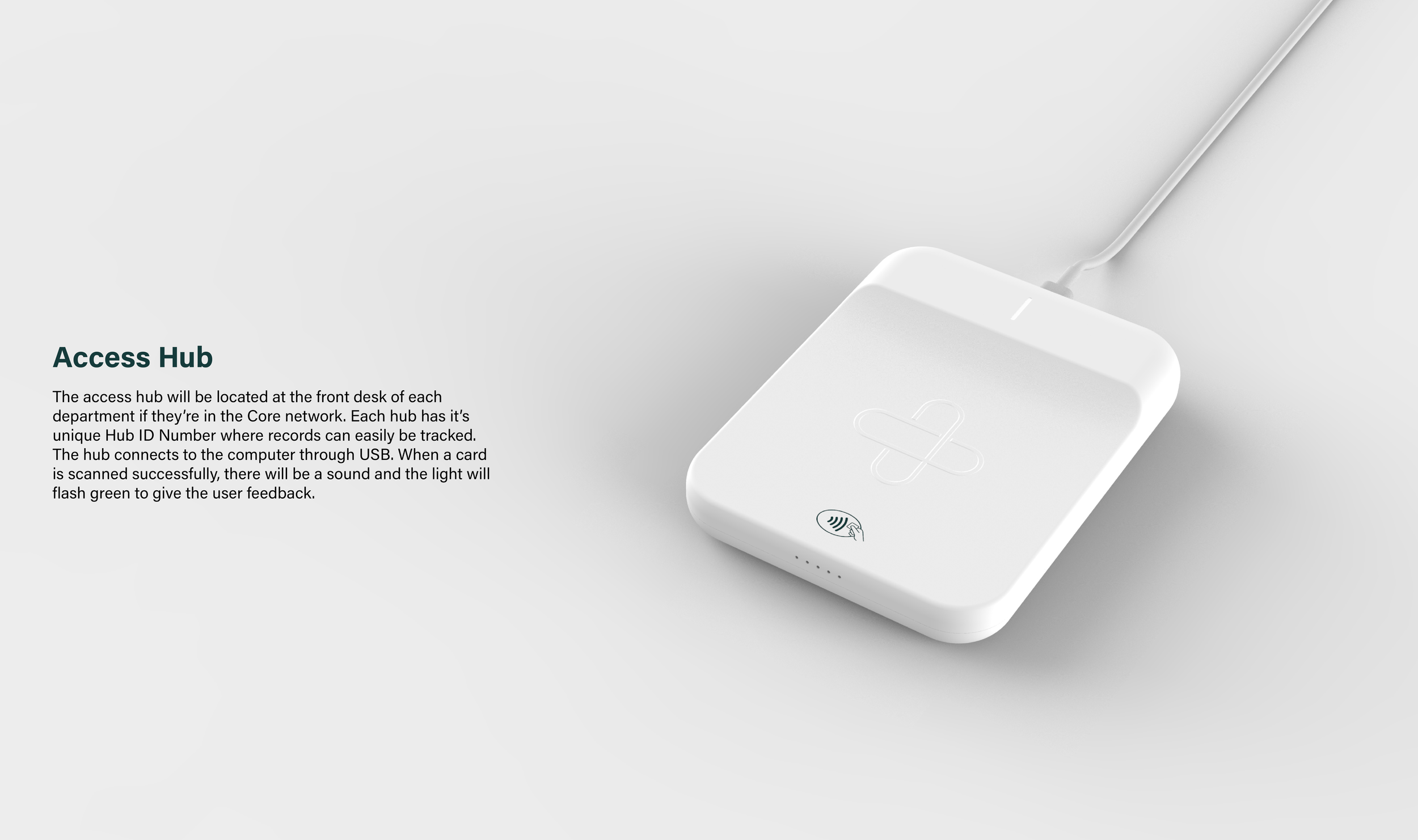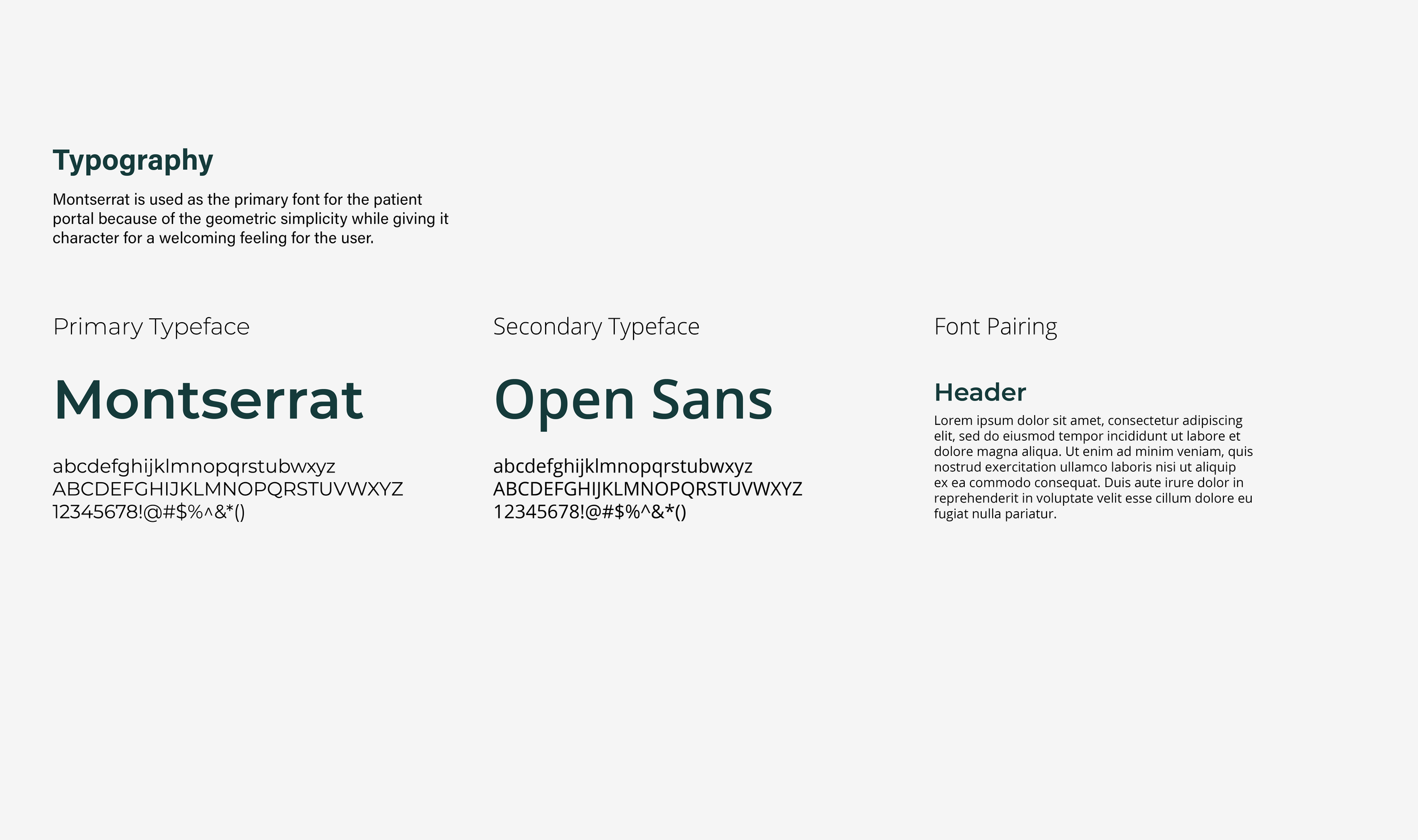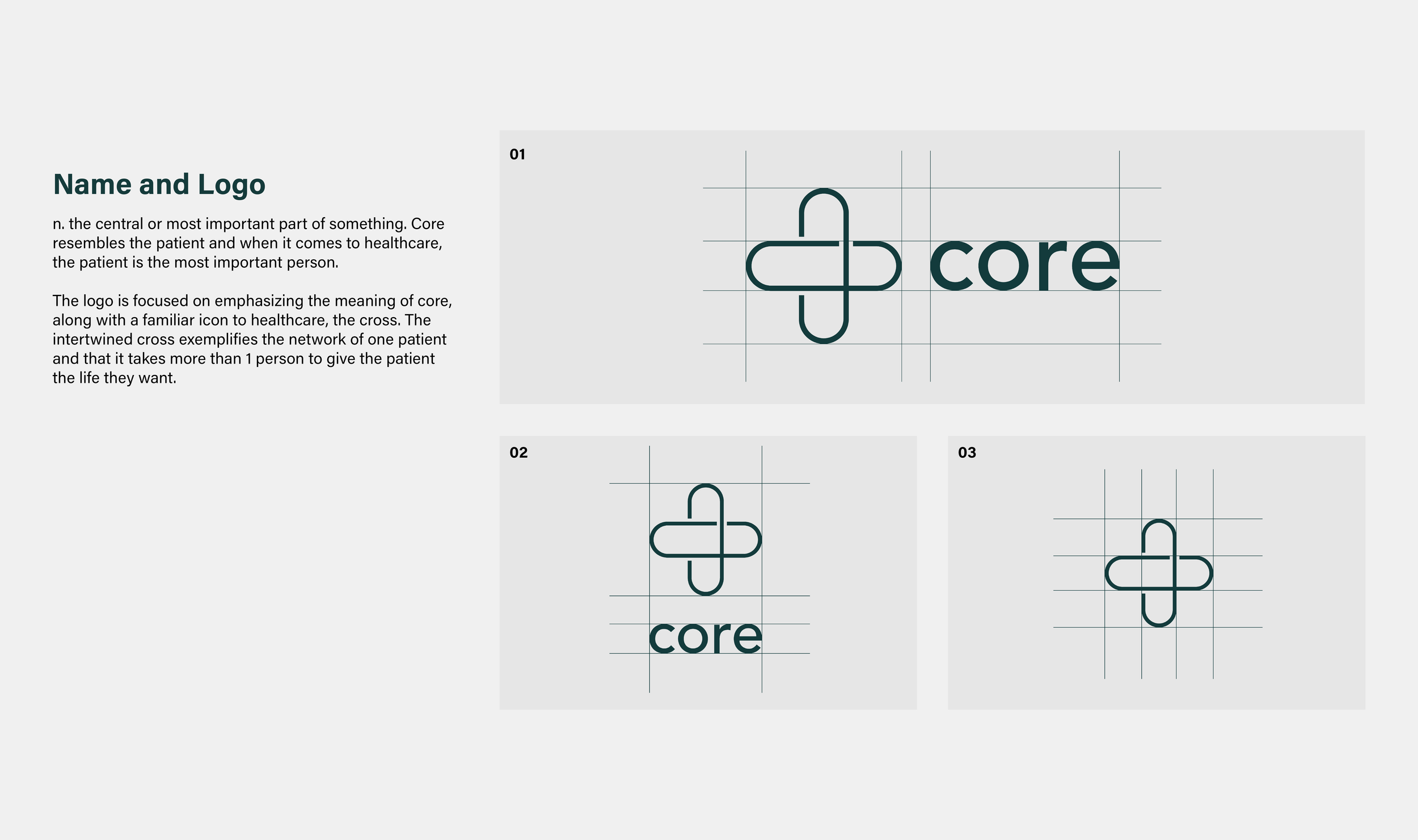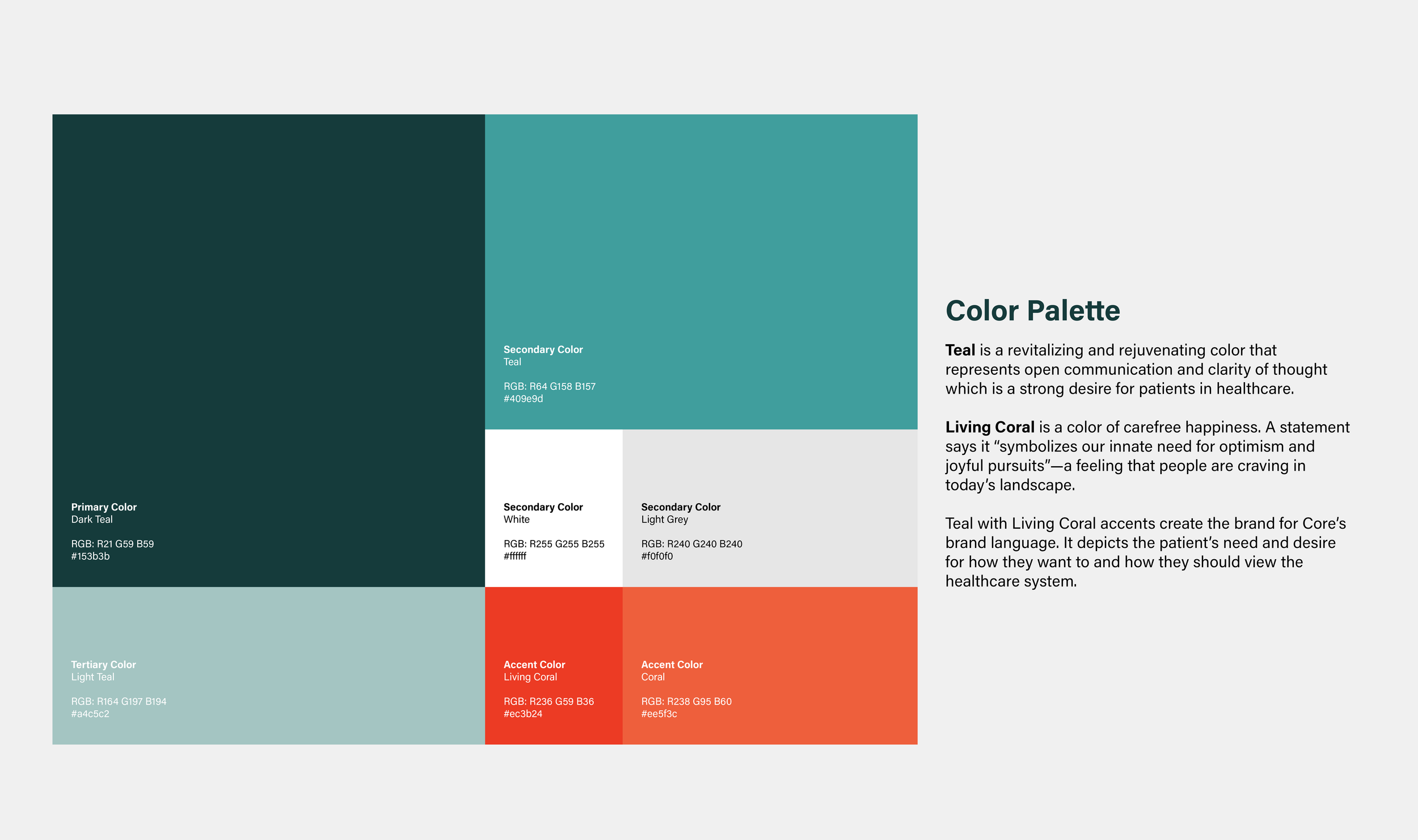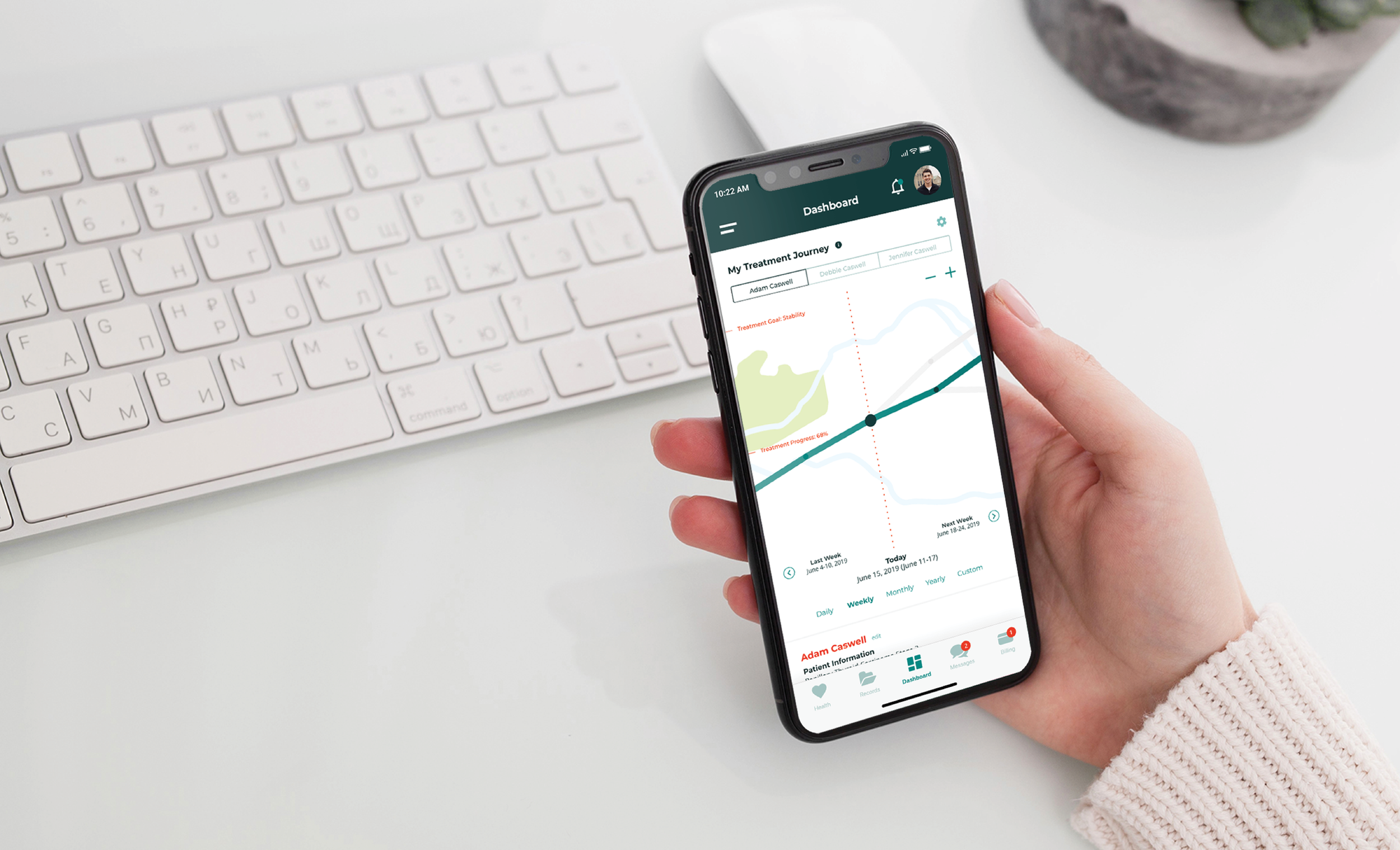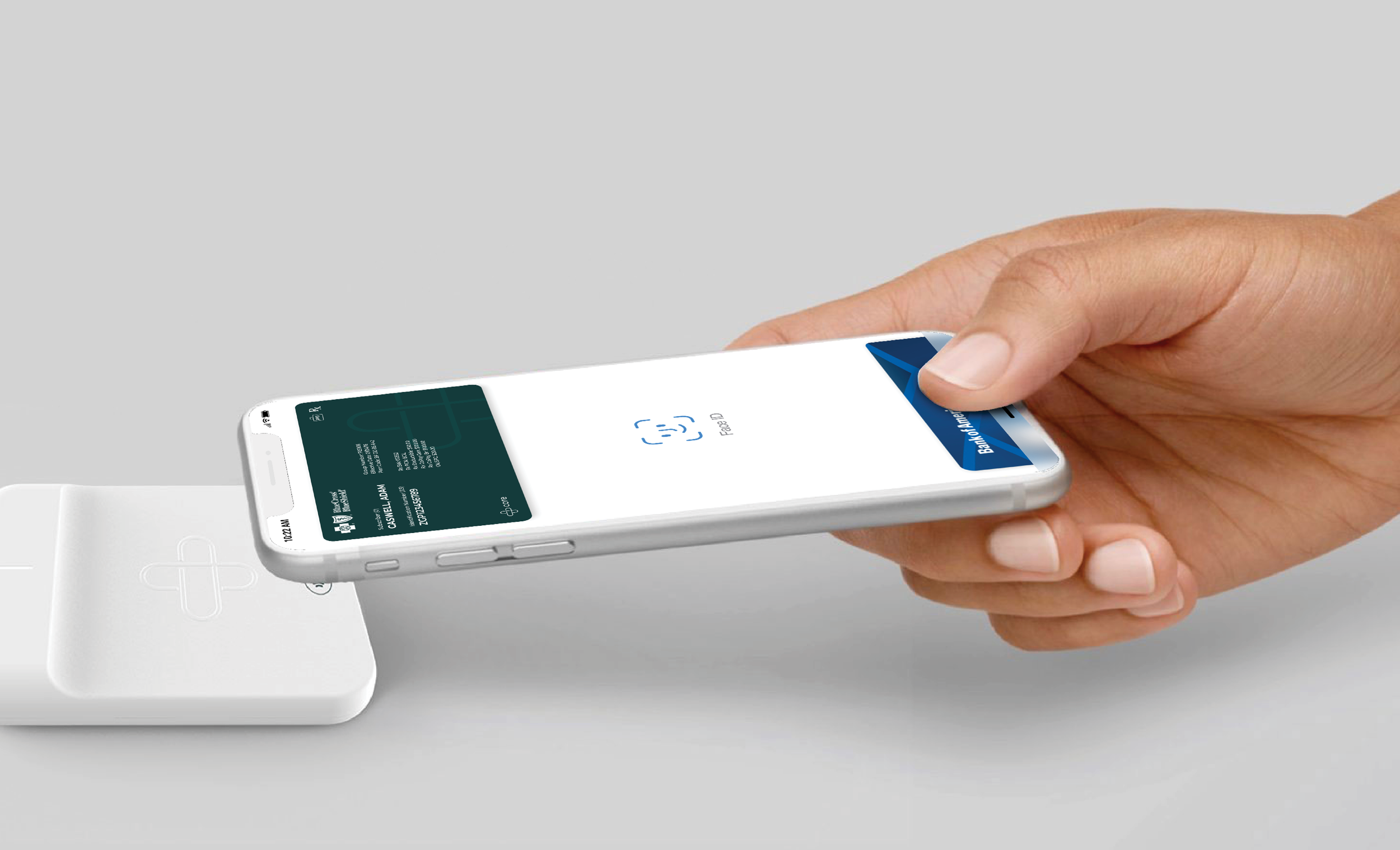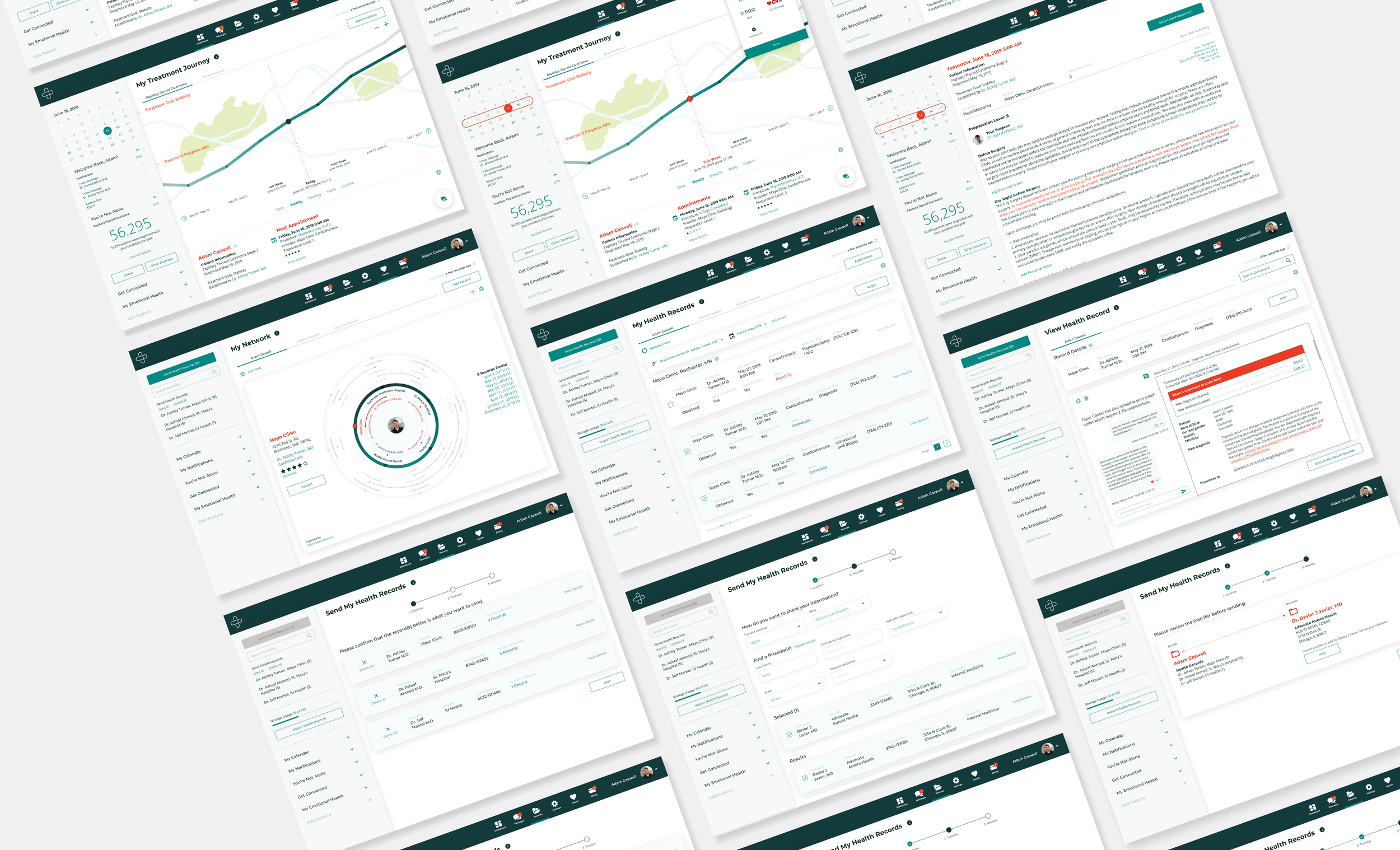Core Patient Care System
Core targets a critical problem in our healthcare system, young people with chronic conditions trying to navigate their care with a broken patient health record system. It is an all-in-one digital PHR ecosystem that consists of a universal patient platform, smart insurance key card and access hubs to revolutionize how health records are used and managed.
Background
41 percent of U.S. patients say they have never seen their own health information.
Although, 8 in 10 people who view their medical records consider that information beneficial and feel like they have more control over their health journey and decisions.
Using National Cancer Institute survey data, a study found that 52 percent of US citizens were offered access to an online medical record by a healthcare provider or insurer in 2017. Of those who were offered access, 53 percent viewed their records only once in the past year.
User Interviews
The key takeaway from my initial user interviews was that they were unsure of whether or not they had the ability to access their health record (whether it was online or in-person) because of the lack of relayed information from the provider to the patient.
“I don’t think I have access to my health record. I don’t really know how or if I have a patient portal. If I do, it’s poorly communicated to me by my doctor. I think he has all the information from my old doctor.”
“There was a poorly trained receptionist who didn’t understand what I was asking for, even after I explained to him that I needed my records and that I have a new doctor for internal medicine since I can’t see a pediatrician anymore. He had to ask a nurse for assistance and it made the process annoying.”
“I think St. Bernard just started doing online medical records but I’ve never tried accessing it. I don’t know if our records are online. I usually just sort everything (paper records) in folders anyways since I have to keep track of everyone’s.”
Experience Map
After my initial interviews, I delved deeper into the patient experience of attaining a health record. I evaluated 2 separate paths on how records can be accessed at home, digitally, or at the doctor’s office, emphasizing on where they’re unsatisfied and when they experience moments of delight.
Key Takeaways
There’s a lack of education and awareness (given by the healthcare provider) about the benefits of how a patient can use health records to their advantage.
Most users are unaware of the ability to request their records through an online portal or their healthcare provider doesn’t offer an option to request a record online which pushes customers to disrupt their day-to-day to come to the doctor’s office.
Patients tend to spend a good amount of time preparing for the request before they arrive at the hospital but when they are prepared, they don’t feel confident that they have or did everything they need.
When patients are ready to access or transfer their record, they feel as if their health record isn’t theirs because of the rigorous process they are required to go through.
Market Positioning of the Top 10 PHRs
Being able to visualize the collaboration between your doctors and the patient will allow for an easier transition when it’s time to switch providers or telling a new provider about their condition. Currently, how that is done is through the use of patient portals.
With Allscripts FollowMyHealth, Epic’s MyChart, and eClinicalWorks being the top patient portals with access to patient education resources and preventive health goals and tracking, there is still opportunity for customization and resourcefulness to create a focal point for a patient’s narrative.
What keeps users coming back to login into their patient portal? Information and benefits that are customized to each patient’s needs.
Contextual Inquiry
I interviewed Claudia, an administrative assistant in Virginia who has Thyroid Carcinoma, Stage 3, to dig deeper into the usability of patient portals. Because of her chronic condition, she was able to take me through 7 of the patient portals she uses on a day to day basis.
Key Takeaways
Layout of pertinent information is a key component for the patient to easily find necessary information they are looking for.
The education tab was a feature that Claudia appreciated the most out of all of her portals, it made her feel that there’s more to her life than having cancer.
There is a disconnect between different portals where information isn’t synced which makes it difficult to keep track of where is what and if a record was successfully transferred.
Meet Jennifer
I created a persona to resemble the white space of designing for patients who are diagnosed with a chronic condition at a young age, along with the challenges faced by older adults.
Synthesis
To wrap up my research, I created a problem summary which led to 3 key insights and a How Can We statement to drive my design in the right direction.
Design Direction
My focus was on the systematic approach for creating a service that offers a product for the healthcare provider and patient, along with a new and improved patient portal.
Ideation and Concept Development
I looked into several portable assets such as key chains, biometric scanning, insurance cards w/scanning abilities. I also considered features for a better health portal such as a personalized dashboard, multiple portal management, and AI technology to scan and sort paper records.
Wireframes
I created wireframes alongside Claudia, using an agile development methodology. I focused on 3 key components: the treatment journey, health records, and the healthcare network.
Final Concept
The system is comprised of 3 main components: the access hub (1) where the insurance card (2) can be scanned to release a patient’s record to the universal portal (3).
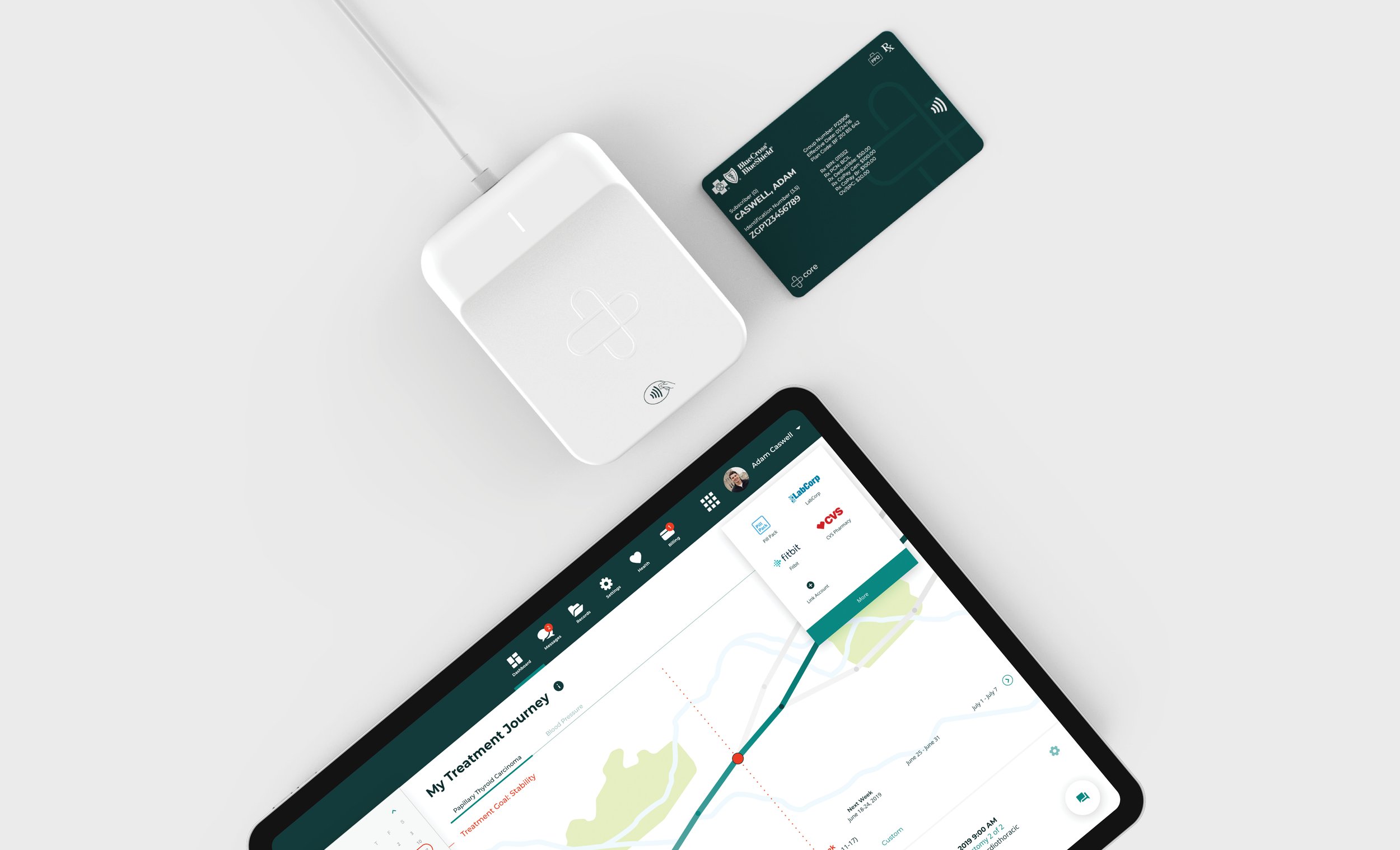
Core Patient Care System
Reimagining the patient health record system
Student Notable
Service Design Award
2020 Core77 Design Awards
“Working in healthcare myself, designing for people with chronic conditions, I was especially impressed and commend your focus in this critical area. Our jury was impressed with the quality and breath of research into the problem space and the multi-touchpoint service solution. Well done, Jesse Palma, on this EHR/PHR challenge and empowering people to effectively manage their own healthcare journey.”
Natasha Margo Blum, Principal Director at Blumline
Silver IDEA Award
2020 IDSA IDEA Awards
2020 marks the 40th anniversary of the International Design Excellence Awards (IDEA), one of the longest running and most prestigious design awards programs in existence. Originally founded to recognize exceptional achievement in industrial design, the program has since grown to highlight design in many connected disciplines including design strategy, branding, digital interaction and so much more. Each year, thousands of entries are submitted by design teams across the globe, making IDEA one of the largest and most widely anticipated annual awards programs in the world.


